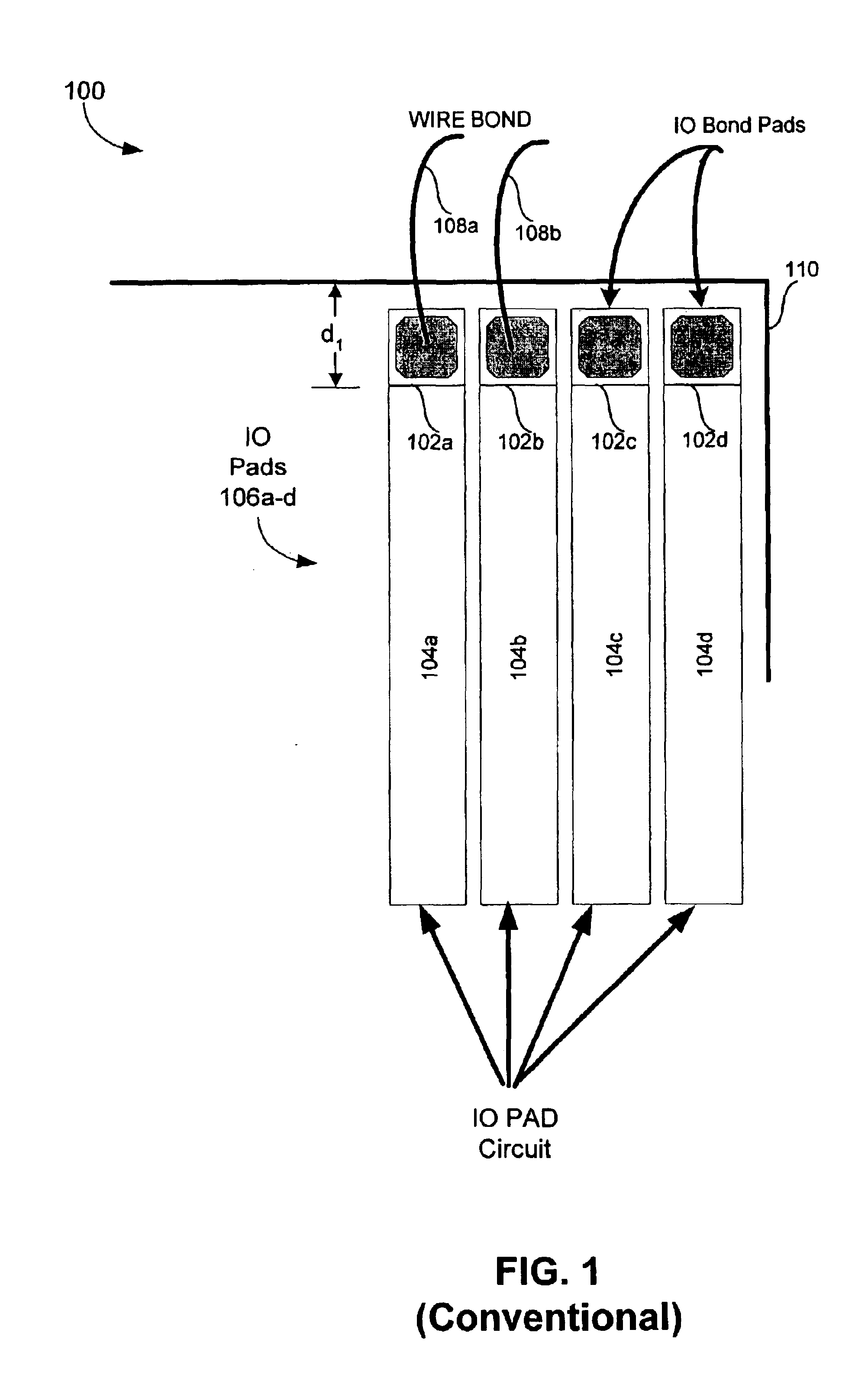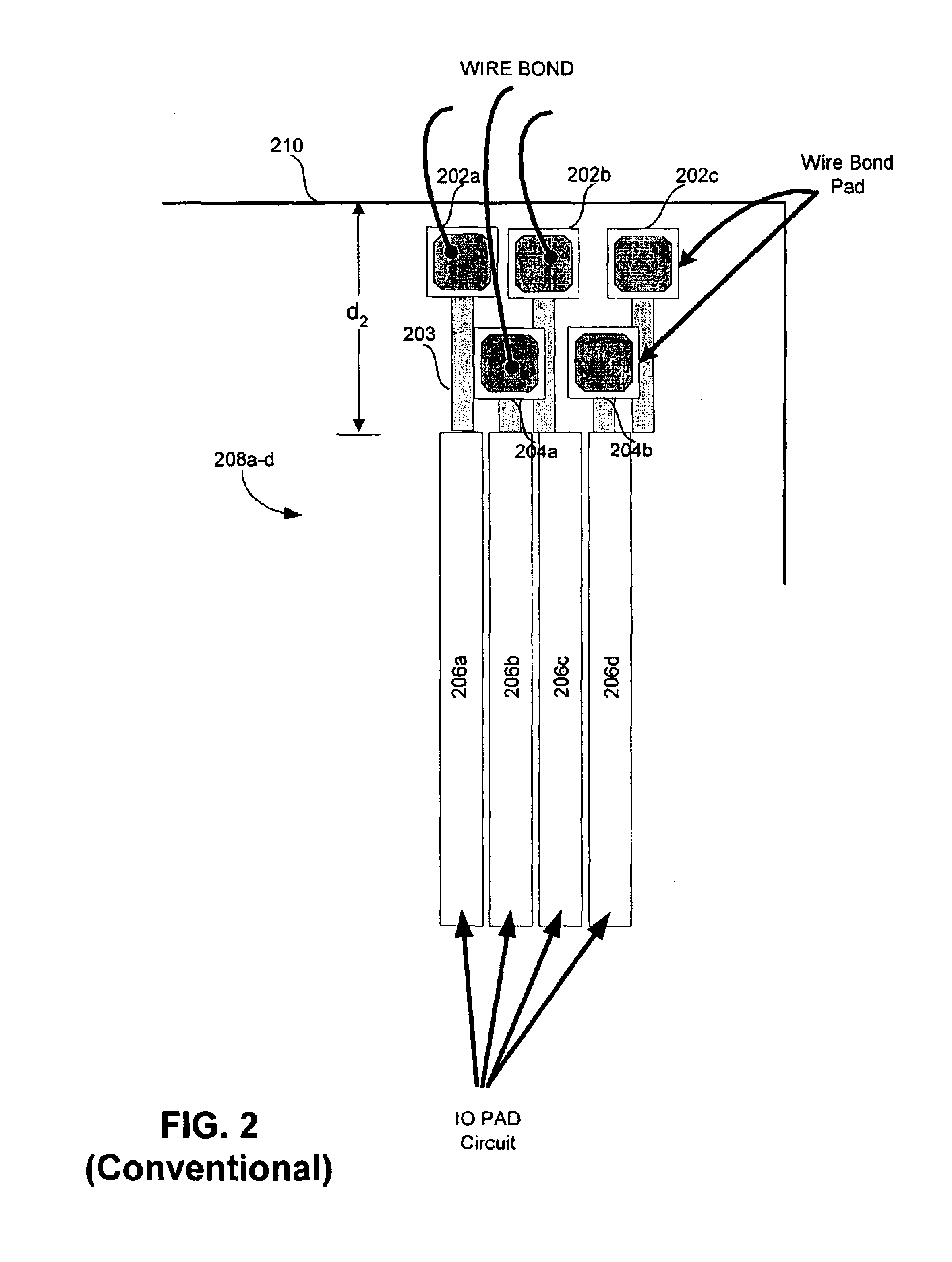Multi-concentric pad arrangements for integrated circuit pads
a technology of integrated circuit pads and concentrations, which is applied in the direction of electrical equipment, semiconductor devices, semiconductor/solid-state device details, etc., can solve the problems of limiting the number of pads on a die, the difficulty of reducing the i/o pad pitch of the ic die below approximately 50-100 microns, and the cost of the die is higher. achieve linear cost increase per pad count, increase the density of pads, and increase the effect of pad density
- Summary
- Abstract
- Description
- Claims
- Application Information
AI Technical Summary
Benefits of technology
Problems solved by technology
Method used
Image
Examples
Embodiment Construction
As introduced above, the present invention involves an approach to layering sets of MCP to increase pad density. FIGS. 3A-B, 4, and 5, described below, illustrate this approach with the use of pad sets and a mesh interconnect.
FIG. 3A shows an IC die 300 having a multi-concentric pad (MCP) arrangement based on an in-line pad arrangement according to an embodiment of the present invention. IC die 300 includes IO pad set (or row) 301 and IO pad set 303.
IO pad set 301 includes IO pads 301a, 301b, 301c, and 301d. Each IO pad 301 includes a bond pad 302 that is connected to an IO circuit 306. Bond wires 310 are bonded to the bond pads 302 in order to communicate input and output signals to and from the IC die 300. The IO pad circuits 306 provide any necessary interface circuitry between the IC die 300 and the external circuits connected to the bond pads 302. More specifically, the IO pad circuits 306 provide an interface to the core circuitry of the IC die 300.
Similarly, IO pad set 303 in...
PUM
 Login to View More
Login to View More Abstract
Description
Claims
Application Information
 Login to View More
Login to View More - R&D
- Intellectual Property
- Life Sciences
- Materials
- Tech Scout
- Unparalleled Data Quality
- Higher Quality Content
- 60% Fewer Hallucinations
Browse by: Latest US Patents, China's latest patents, Technical Efficacy Thesaurus, Application Domain, Technology Topic, Popular Technical Reports.
© 2025 PatSnap. All rights reserved.Legal|Privacy policy|Modern Slavery Act Transparency Statement|Sitemap|About US| Contact US: help@patsnap.com



